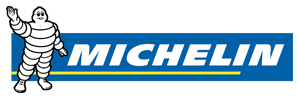Exhaust System Repair
The exhaust system, located on the underside of your vehicle, is responsible for collecting and directing harmful emissions away from the vehicle, reducing the amount of pollutants released into the environment, and minimizing engine exhaust noise and force. The exhaust system, composed of pipes and tubing, is designed to streamline vehicle operation while maximizing vehicle performance and efficiency. As a byproduct of the combustion process, engines produce dangerous gases. The exhaust manifold collects the emissions from the engine and funnels the gases through the front pipe to the catalytic converter. The converter transforms these harmful gases, such as carbon monoxide, hydrocarbons, and nitrogen oxide, into less harmful gases like oxygen, nitrogen, water vapor, and carbon dioxide. The engine creates noise which is cancelled out by the muffler. The muffler dissipates sound waves and the tailpipe releases the converted gases into the atmosphere.
BenefitsThe exhaust system can affect both your vehicle’s performance and your ability to drive, depending on the problem. It is important to keep current with maintenance intervals on your exhaust system for these reasons. If you hear excessively loud noises during acceleration, a repair service may be impending. Holes or cracks in the exhaust system may cause these noises. If your vehicle makes rattling noises when starting it up or idles excessively, it may have failed or broken hangers. This may be a serious sign that fumes are leaking through the vents and into the cabin interior if you feel drowsiness while driving. Noxious fumes leaking into the vehicle can also be indicated by sharp odors. Any signs of rust or cracks in your exhaust system components indicate corrosion. If you experience any of these symptoms, you should seek medical help as soon as possible. Routine exhaust system services will help maintain all your exhaust components, like the exhaust manifold, front pipe, downpipe, catalytic converter, and muffler, working efficiently. If you regularly maintain your exhaust system, you won't have to replace the whole system later.
|






